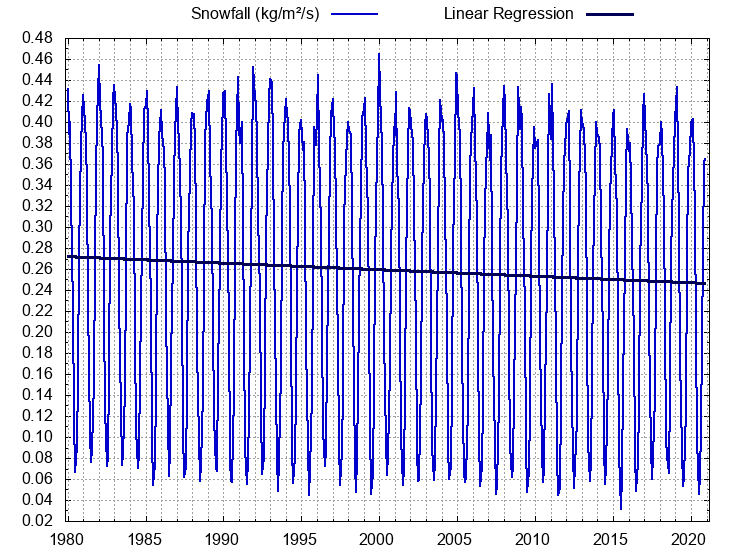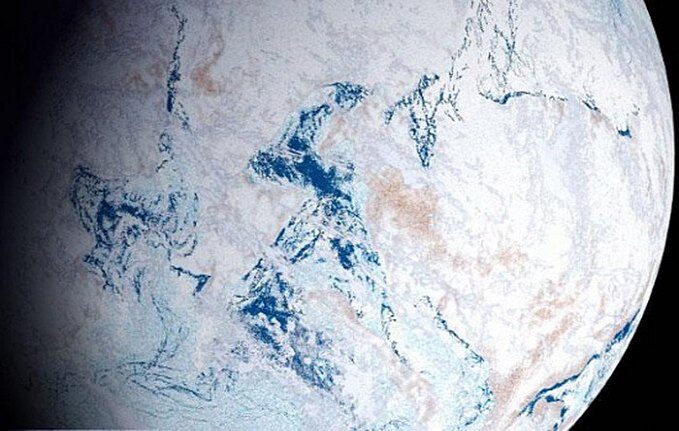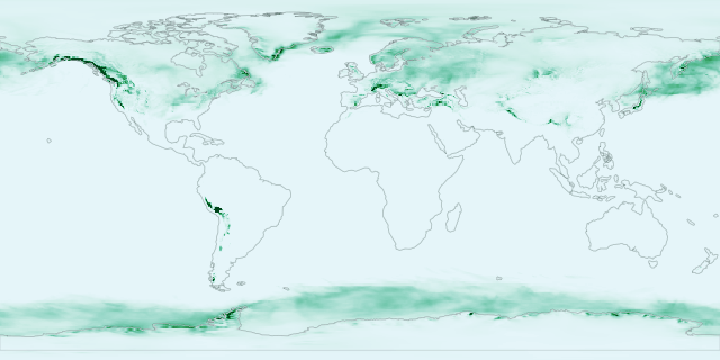Zoe was curious to know what the global snowfall trend was in this era of "extreme global warming."
"Luckily," she writes, "NASA covertly provides us with all the necessary data to figure this out."
Zoe downloaded all available monthly images from 1980 to 2020 (inclusive), such as the one shown here:
Next, she converted the pixel colors back to data using the provided scale.
This is a clever way to extract a rich dataset, which isn't available anywhere else: all other snowfall or snow-cover datasets are limited by region or date, and so researchers routinely reach the wrong conclusion!
The overall picture is what's important.
Below are the results of Zoe's quest:
According to the "covert" NASA data, global snowfall has increased by nearly 3 percent over the last four decades. It went from 0.2773 to 0.2854 decigrams/m2/s, which is +2.90 percent more.
Zoe also goes on to break down the data by hemisphere.
If you were to only look at the Northern Hemisphere then you would be forgiven for concluding that Earth's snowfall has been on the decline for the past 40 years (and this is routinely what agency's like NASA do):

[0.2722 -> 0.2468 is -9.35%]
Down south, snowfall has grown from 0.6257 to 0.7057 decigrams/m2/s, or a whopping +12.77%.
"This data is obviously available to NASA," concludes Zoe (because that's how the images are generated!).
"The truth is hard to find.
"But I try."


![Click to enlarge Global Snowfall (1980-2020) [0.2773 -> 0.2854 is +2.90%]](/image/s30/607832/global_snow.png)
![Click to enlarge South Hemisphere Snowfall (again, Jan. 1980 through Dec. 2020). [0.6257 -> 0.7057 is +12.77%]](/image/s30/607834/snow_sh.png)



Reader Comments
to our Newsletter